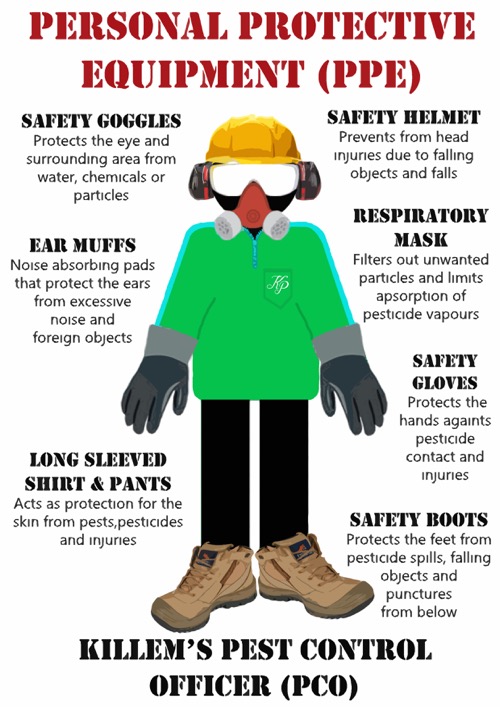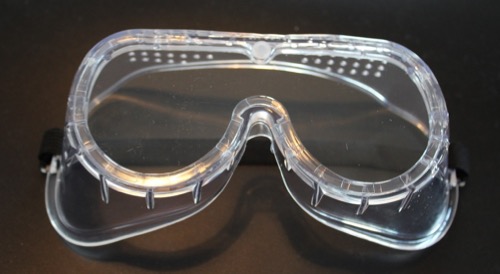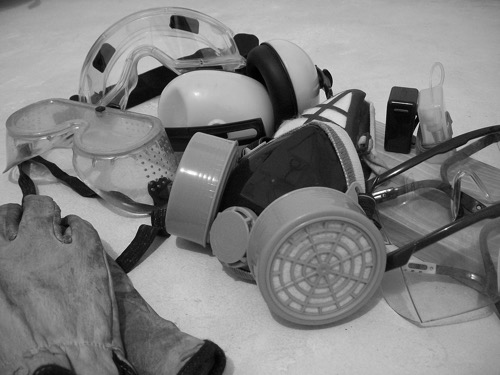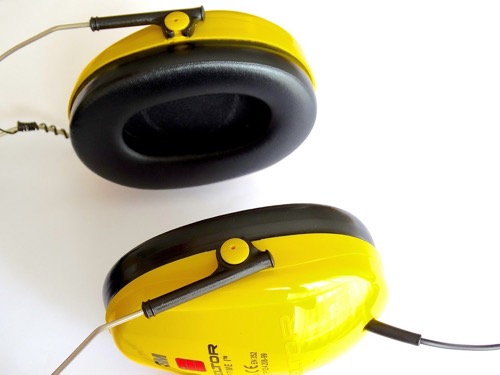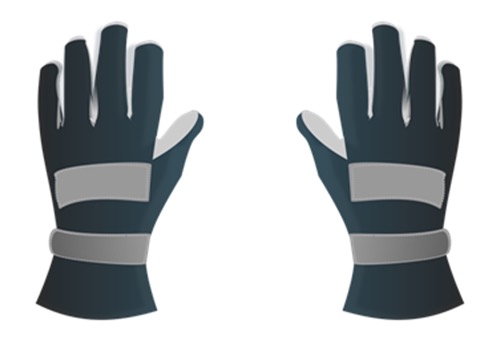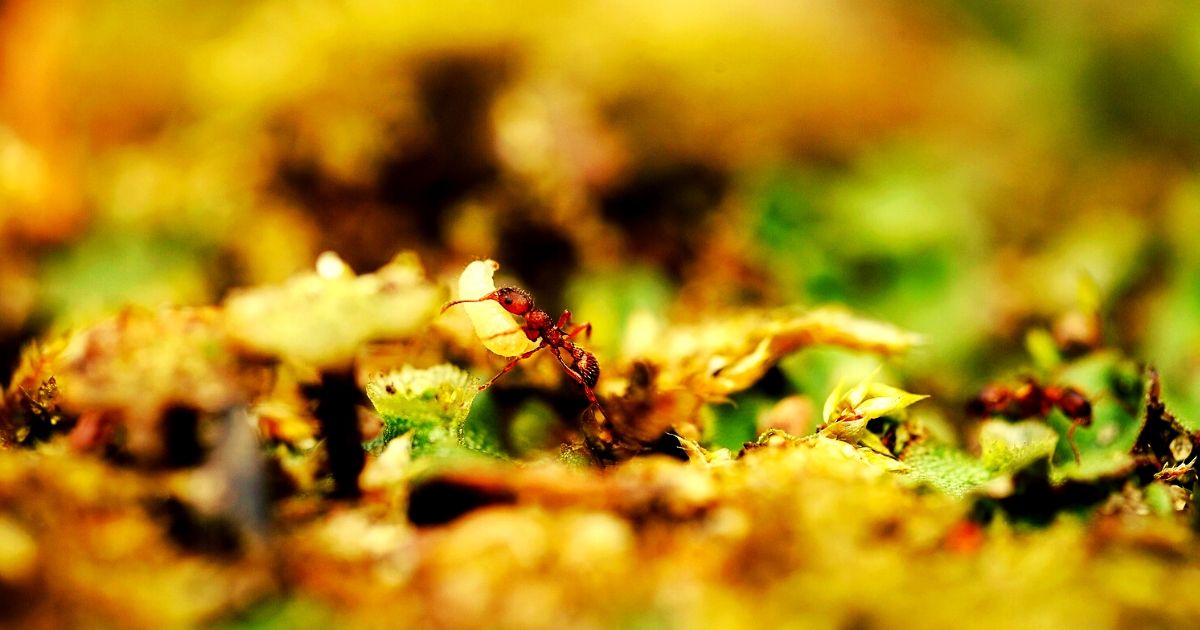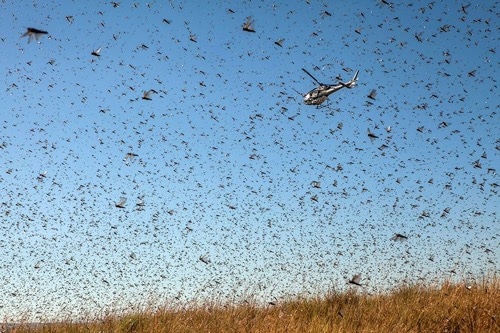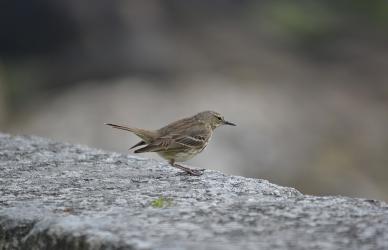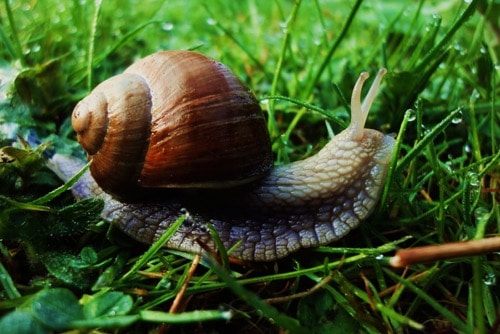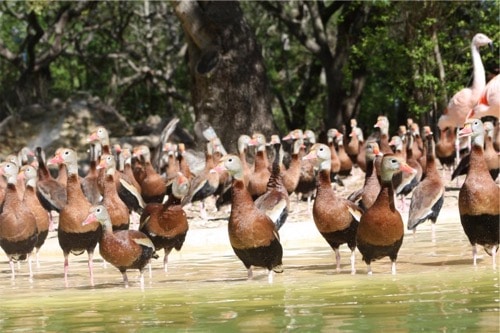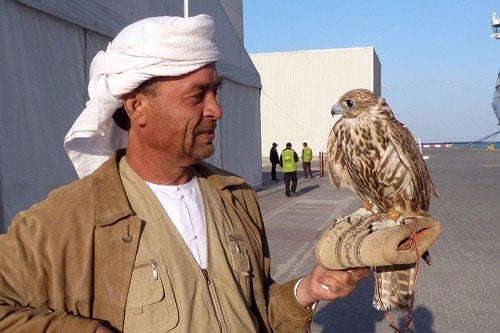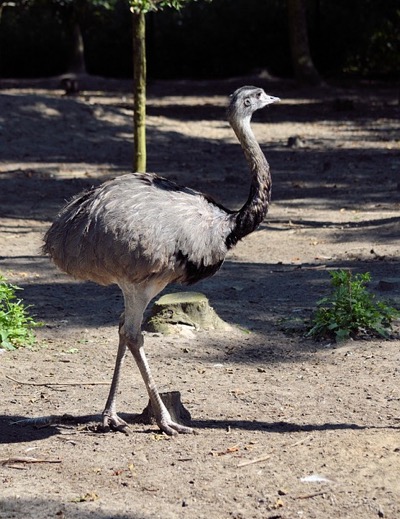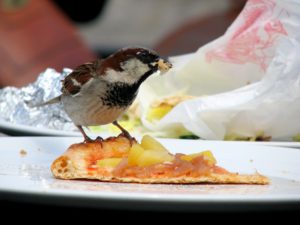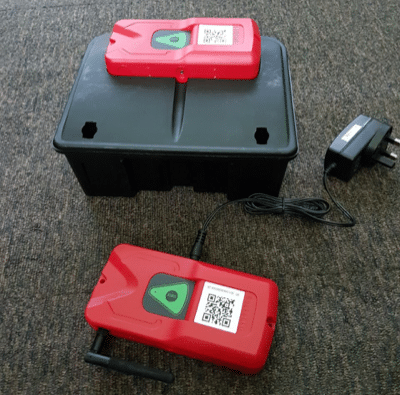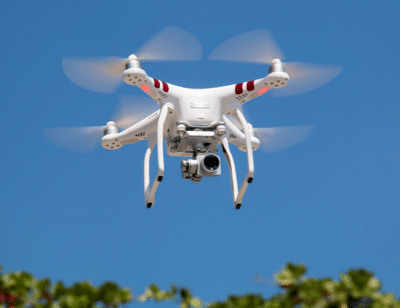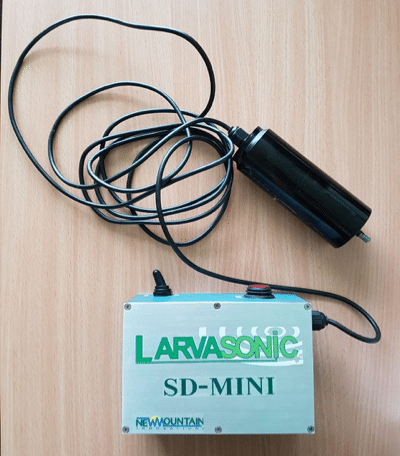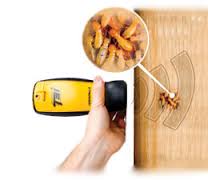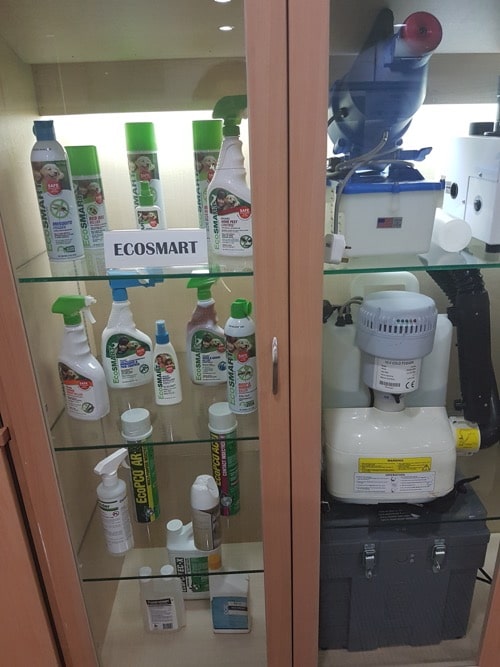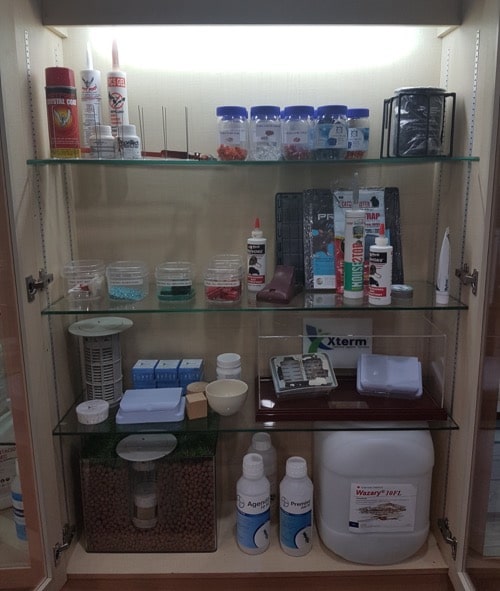How Personal Protective Equipment (PPE) is used in the Pest Control Industry
General
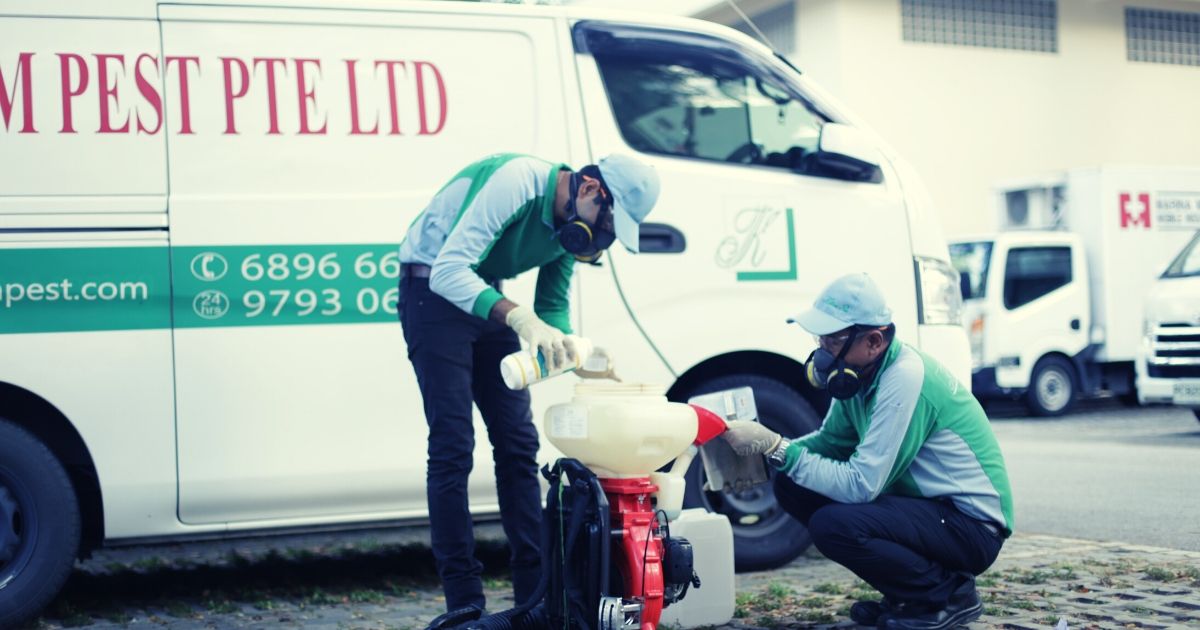
The job of a Pest Control Officer (PCO) at times, involves more risk than one might assume. In their line of work, they are constantly exposed to chemicals and use equipment that requires a certain level of skill to operate.
Though Killem Pest uses environmentally friendly and target pest specific pesticides that are not harmful to humans, proper health and safety measures still have to be adopted to protect our PCOs.
The use of appropriate Personal Protective Equipment (PPE) is one of the most important measures.
What is PPE?
It is important that all PCOs are equipped with a set of PPE as this protects individuals not only from pesticides but also from work place injuries. Pesticides can come in contact with the PCOs by entering through their eyes, mouth, and skin or by inhalation.
To limit the exposure of these substances, at Killem Pest, our PCOs are adorned with protective gear from head to toe. Its starts with a safety helmet, goggles, ear muffs, respiratory mask, safety gloves and safety boots. They are required to wear long sleeved shirts and trousers during their working hours. They may, from time to time, require additional protective gears depending on the scope of the job assigned. In some cases, our PCOs will be required to wear a bee suit, for protection or a safety harness, when working at height.
Safety Helmet
(Prevents from head injuries due to falling objects and falls)
In an environment where chemicals, falling of unpredictable objects and impacts to the head come into existence, a safety helmet is mandatory. It prevents head injuries and should be worn at all times. During certain services, PCOs may be at places such as construction sites or places with perilous objects.
To maximise the efficacy of a safety helmet, it should be worn the right way. The headband within the safety helmet should be adjusted such that the helmet sits on each individual’s head perfectly. A chin strap should also be used to prevent the helmet from falling off the head.
Safety Goggles
(Protects the eyes and surrounding area from chemicals and unwanted particles)
Every PCO is exposed to pesticides, however little to no level of toxicity they contain. Pesticides are used in various ways, one of which is by using a sprayer or mister. In situations where pesticides have to be sprayed or dispersed, there is a risk of getting these pesticides in contact with the eyes.
Safety goggles prevent this and any other unwanted objects from coming into contact with the eyes and the areas surrounding them. They should be worn tight enough and adjusted to fit each individual perfectly.
Respiratory Mask
(Filters out unwanted particles and limits absorption of pesticide vapours and fumes)
Vital organs can be in risk of damage if the right equipment is not used to protect it. The lungs and the respiratory system are some of the important organs that will need protection in the line of work of a PCO. To limit the absorption of pesticide vapours, fumes and other unwanted particles, a respiratory mask should be worn.
Treatment methods such as fogging use petrol and diesel to function and produce fog. Fogging releases droplets smaller than a hair particle that only affects pests (and within a short range). The mask is however a necessary equipment for the applicators as they are in the closest proximity to the fog and are constantly exposed to the particles.
At Killem Pest, the half-mask respirators and filtration cartridges are issued to the PCOs. The half-masks offer protection and coverage of the nose, mouth and chin area. It is adjustable and has a cushioned fit so that it sits comfortably on the face. The filtration cartridges filter out unwanted particles in the air such that the wearer is able to breath in clean and fresh air. The half-masks also protect the wearer from ingestion of the pesticides.
Ear Muffs
(Noise absorbing pads that protect the ears from excessive noise and foreign objects)
Ear protection in the form of ear muffs is necessary because our PCOs may use equipment that produce high levels of noise as they are affixed with motors. Some of these include foggers, blowers and when carrying out construction soil treatment and drilling. Prolonged periods of exposure to loud noises can damage the ear drums.
Ear muffs should be worn tight enough that it sits comfortably around the top of the head with cushioned pads around the ear and head. The materials absorb the noise and cover the ear from unwanted particles entering. When used together with the safety helmet, the ear muffs are further protected from falling off the head.
Long Sleeved Shirt and Trousers
(Acts as protection for the skin from pests, pesticides and injuries)
PCOs should always wear long sleeved shirts and trousers as they are prone to exposure of pesticides. When their job requires them to spray pesticide especially, wearing fully covered clothing can help with avoiding contact with the skin. They also help to keep pests from biting or attaching themselves to the skin.
Pests such as cockroaches are quick to find ways to escape during extermination.
To avoid contact with cockroaches, PCOs can tuck their pants into their safety boots and sleeves into their safety gloves such that no entity can find its way through the pants openings.
Sometimes the job requires our PCOs to be constantly exposed to the sun for long hours and wearing fully covered clothing helps keep exposure to a minimum. Treatments such as fogging also releases fog that is of oil-based particles and can distribute itself onto the applicator’s skin. In very rare cases, the fogger can explode or catch fire. The long sleeves and trousers in such cases act as a layer of protection from burns.
Safety Gloves
(Protects the hands from pesticide contact and injuries from equipment)
Machines or other equipment are usually used during pest control services but the hands should be protected as there are still risks of contact with pesticides. Especially when preparing chemicals during services, safety gloves should be worn to limit exposure to pesticides. Safety gloves also act as protection against injuries when handling equipment. The use of gloves can be maximised by tucking in the openings into the shirt sleeves as this will leave little to no gap for pests or pesticides to enter.
Safety Boots
(Protects the feet from pesticide spills, falling objects and punctures from below)
This is one of the most essential PPE that all PCOs should have and wear at all times. Safety boots not only protect the feet from falling objects but also protect the sole of the feet from punctures from below. Pesticides are often sprayed and in such cases, limiting the exposure or protection from spills can be achieved by wearing ankle high safety boots.
PCOs are inevitably exposed to pesticides, different equipment and at times, dangerous environments such as construction sites or work at height. Though they can be careful when performing their duties, the best prevention would be to be in their PPE, at all times.
Frequently Asked Questions
To avoid contact with chemicals, you should wear safety goggles or a full-face shield, a respirator, and gloves. For high-exposure situations, you might also need additional PPE to fully cover your body and skin.
Pest control chemicals can be very toxic: not only they can cause severe irritation to the skin, eyes, mouth, and other parts of your body that get into contact with pesticides but can even be deadly when absorbed through the skin.
Breathing or getting into contact with some toxic pesticides can have serious health consequences, so it is important to protect your face, nose, and mouth during spraying.
Related Posts
The Biggest Jobs in Pest Control History
General

Singapore may be currently experiencing a rise in rodent populations due to an increasing human population (therefore an abundance of food and shelter), however, we should count ourselves as lucky as this is nothing compared to some of the pest control jobs below…
Rooting out the Rats
The Rat Islands; an unappetizing nickname for a place overwhelmed with unsavory creatures. Located in southwest Alaska, the Aleutian Islands were infested by rats after a fishing vessel arrived on the coast and accidentally introduced the population into the ecosystem in 1780.
With few natural predators, the rat population flourished and numbered into the thousands, decimating the local seabird numbers.
An invasive pest, rats were recorded by subsequent voyages throughout the 19th century and continued until the 21st.
Annoyed by the scourge, the federal government of the United States teamed up with local conservation groups and launched a $2.5 million project that involved state-of-the-art technology and chemical trickery.
Rats are intelligent creatures; if a food seems poisonous, the rest of the population will avoid it. In order to trick the rodents, scientists placed a slow-acting toxin in grain pellets that would take five days to act. Within a few weeks, the rat population died underground in their burrows, restoring the natural ecosystem.
Pests are invasive and, when left unchecked, can wreak havoc on entire islands.
The Argentinian Plagues
Argentina is a South American nation that experiences annual locust problems due to the warm, wet climate and agricultural economy. The locusts breed in the forests, spreading their offspring each year and raiding farms for food. However, previous insurgencies were nothing compared to the epidemic that struck the nation in 2016.
Clouds of locusts ranging from four miles wide to two miles high could be seen across northern Argentina, and boded ill for farmers who soon found their homes surrounded by young.
Fumigators in 66 counties spent a month working for Senasa – the Argentinean agricultural agency.
Hundreds of thousands of dollars were spent combatting the plague before it could descend upon farmers, sparing them the loss of crops worth millions.
However, this was not the end for Argentina. Despite their efforts, fumigators missed large chunks of the population. Helicopters were called in to spread pesticides throughout the countryside, adding even more expense to the already costly infestation. Argentina’s problem is a prime example of a simple maxim: do not let a pest population grow out of control.
Four Small Pests, One Large Failure
Good intentions can have bad outcomes. In 1958, leader Mao Zedong introduced the “Four Pests” campaign designed to target four creatures that spread disease and damaged crops in China. Mosquitos, rodents, and flies were common pests eliminated through traps and poison.
Sparrows were the fourth “pest” but would have drastic consequences.
People would destroy nests and baby sparrows, shoot the birds, or prevent them from sleeping by drumming until they fell dead from the sky. The scale of this operation was enormous – truly one of the greatest pest control jobs in history. Millions of people engaged in competitions to see who could eliminate the most pests; the winners were rewarded.
By 1960, severe ecological damage had been wrought. Rice, the staple crop, withered and was devastated by hordes of insects that no longer had their natural predator, the sparrows. Poor pest control, in combination with misused pesticides and deforestation, led to a famine that killed between 20-40 million people.
Pro Tip: Pest control should be left to pest management professionals.
If you have a pest infestation that is beyond your control or other pest control providers have not given effective solutions, please get in touch with us. There is a reason our motto is: “When all else fails, Killem prevails”. We are confident that we can provide the most effective and least disruptive solutions to your pest problems.
Related Posts
Industry Inside: Pest Control in Schools and Learning Institutions
General

Schools are places of learning, but that does not mean that students and employees will not be plagued by the same pests that affect other buildings. Ants, cockroaches, rodents, and flies are common creatures whose populations will grow out of control unless curbed.
Where can Pests be Found?
Schools have many places for pests like cockroaches and rodents to hide. Cafeterias are common spots known to become infestation zones because of the abundance of food and the number of hiding places – homes can be established in cabinets, between appliances, and even in the floor and walls.
Lockers are another dangerous area: if a student forgets about snacks left inside, pests can sneak in and then transfer to other lockers in the area or even the student’s home. Gyms, locker rooms, unattended dumpsters, and even buses have hundreds of nooks and crannies that pests would find comfortable.

How can Pests Spread?
In a large institution like a school, it can be difficult to identify all the areas that have become infested. Disease can spread quickly from fecal matter, to one human, and then rapidly to many others that cross paths with the infected.
Small children have less developed immune systems and are more likely to contract and pass illnesses to their peers. It is recommended that children be separated by age so that children over the age of 3 are not exposed to their younger peers, who are more susceptible to disease.
Due to being outdoors, children are also likely to bring pests inside.
Even more problematic is that students and teachers can accidentally take pests home in their backpacks and bags, which spreads the problem.
Once a pest infestation is detected, children should be removed from the problematic areas and tested for possible illnesses. Spraying, gelling and misting are quality services that can stop an infestation once it has started, and calling professionals should be the first step rather than school employees trying to use commercial killing products.
Pro Tip: It is important to hire professionals instead of using DIY pest control methods in schools.
How to Control Pests Once There is an Infestation?
Professional pest control providers such as Killem Pest can prevent many of the pitfalls of home treatment. With the experience we have, our pest control providers are able to select chemicals that cause the least amount of harm to both the environment and the population of the school. Many novice users will spread the chemicals too far, use too little, or use too much. In these situations, it is possible to make students and employers sick, or even poison them by accident.
Proper disposal is also important, and professionals have the resources and knowledge to remove toxins safely and effectively.
They are also trained to detect nests and hiding places, ensuring a thorough job that can prevent pests from returning.
Many people make the mistake of only targeting one area, when pests like cockroaches, ants, flies, and other smaller organisms can spread throughout the entire building. Professionals are more capable of conducting a thorough search and solving the problem.
How to Prevent a Pest Infestation?
Before a problem begins, schools can also institute preventative measures against pests. Sanitation rules in kitchens and bathrooms, as well as student lockers, can stop the buildup of food that attracts rodents and bugs.
Play spaces should be sanitized each night. Dumpsters and other receptacles should be emptied nightly and stored somewhere away from the building – the garbage is attractive due to its smell and abundance. Sealing leaky pipes and crevices in the walls and floors can reduce water supplies and restrict entrance into the building, making the school an undesirable habitat.
Students should be educated on the pitfalls of storing food in their lockers for excessive periods of time, and designated eating areas can make proper cleanup easier.
As buses are more difficult to treat than buildings, students can be encouraged to not eat their breakfast there, and to clean up after themselves.
Another way to control the spread of pests (especially communal organisms like lice) is to keep children separated into groups and prevent interaction with one another, as mentioned above. According to the Ministry of Health, such actions will also stop infectious and bacterial diseases from spreading.
Like any other building, schools are susceptible to infestation and should be treated accordingly. Before, during, and after a problem, preventative measures and professional help are encouraged to keep students and employees safe.
Frequently Asked Questions
Pests are attracted to food, water, garbage and clutter, and untidy and poorly ventilated areas. It can be hard to control all the areas in schools and learning institutions, so they can easily become infested.
Pests can cause health problems, structural damage, plant damage, and contaminate food, so it is important to have a pest control and prevention program in learning institutions.
Common pests that can be found in schools include cockroaches, ants, rodents, flies, spiders, termites, and others.
Related Posts
The Strangest Pest Control Stories Ever Heard
General
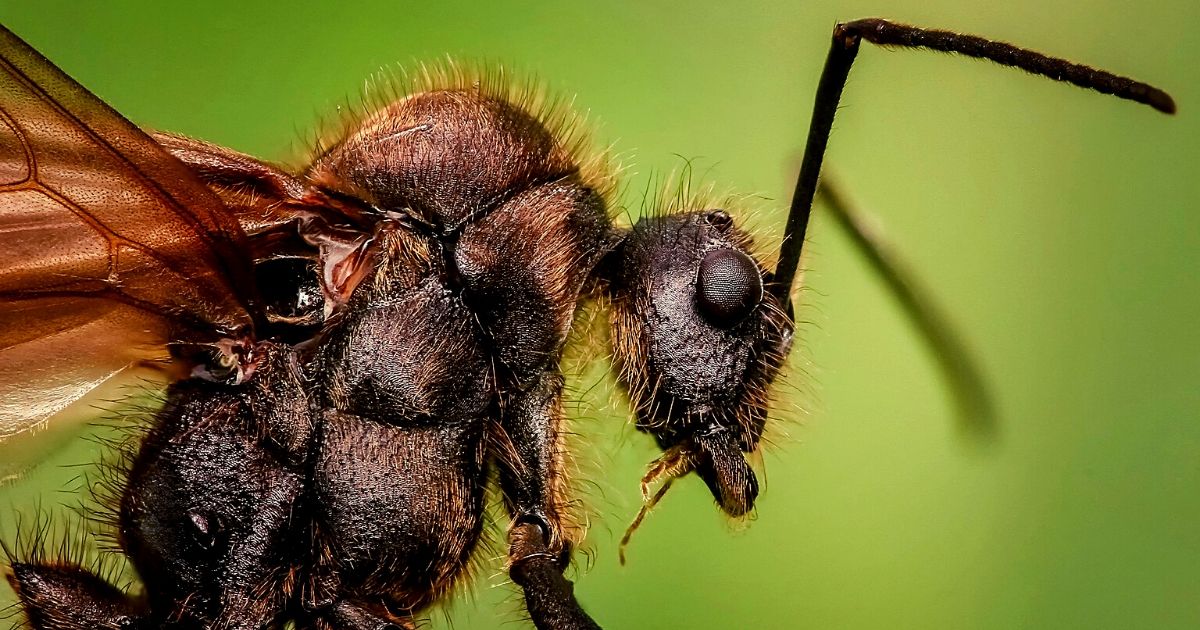
Believe it or not, the pest control industry can throw up some very bizarre stories and anecdotes.
With thousands of different species considered ‘pests’, there have been times in history when some more unconventional pests have caused problems for the local agriculture and ecosystems.
We profile some of the more unusual forms of pest control below.
Killer Snails in Miami
In 2011 the city of Miami, Florida in the United States was plagued by an outbreak of an invasive species: the giant African land snail.
Primarily outdoor pests, these snails are destructive and potential biohazards.
They were able to eat every plant grown in Florida as well as the inhabitants’ walls. They also carried meningitis, the number of cases of which rose significantly.
As of today, the threat has mostly been eradicated with 157,000 snails captured. Because of their numbers, the only way to capture them was for workers wearing rubber gloves to scour the environment and capture the snails in buckets. Today, these same people use plastic bags.
Another control method used was a public information campaign which begged citizens to call a number and report any sightings.
Vineyard Guard Ducks
Crops are a golden target for many garden pests, including those in South Africa. Many varieties of pests eat valuable fields of food. The most common are armyworms, caterpillars, aphids, and species of beetle.
With manpower being so expensive, how do farmers maintain their livelihood? In South Africa, some vineyards and large agricultural sectors have turned to ducks.
Thousands of Indian Runner ducks are trained and cared for in large coops.
At the start of each day, workers release them and direct them to designated fields. As time passes, the ducks disperse through the rows, guzzling up any bug that might be unfortunate enough to have tried to find a meal in the crops. Towards late afternoon, workers find the ducks and round them up. When the group is complete, the ducks are herded back into their shelter, where they sleep until morning and can roam the fields again.
Pigeon Hunting Falcons
Pigeons come in two varieties: feral and domestic. In countries around the world, pigeons are a major problem in cities because of their tendencies to roost in high places, steal food, and leave messes behind.
In order to combat the large pigeon population in the United Arab Emirates, people have begun using trained falcons.
Falcon training has a long history in Arab culture. Due to their excellent vision, they were often used by hunters to spot and kill small prey like mice and other rodents.
Nowadays, as the height and size of cities make it difficult to use traditional pigeon eradication measures, more and more businesses are drawn to falcons. Another reason for its popularity is because falcons hold a high position of status in Arab culture. Being able to afford falcons as laborers demonstrates a business’s wealth and success.
The Great Emu War
Not all pests are small. Australia took a long time to become populated by farmers during the early twentieth century because of a large and deadly pest: Emus. Emus are the largest living bird species in the world, growing to be between 5 and 6 feet tall. They can also run 30 mph, making them difficult to catch or escape from.
From 1929-1939, farmers in Australia were suffering from the Great Depression and having difficulty selling their wheat crops.
Around this time was when 20,000 emus decided to establish their habitat in the farms, destroying crops and driving many farmers bankrupt.
Desperate, they contacted their government and military assistance came. One commander and two soldiers armed with machine guns tried to kill the emus, but the flocks scattered because of rain and the mission was unsuccessful.
A few months later, a second attempt with slightly more manpower occurred, with an estimated death toll of 986 birds. The overall pest control of the birds was unsuccessful. Many farmers were forced to fend for themselves or wait for wandering patrols to find their way to the farms.
New York Night of Horror
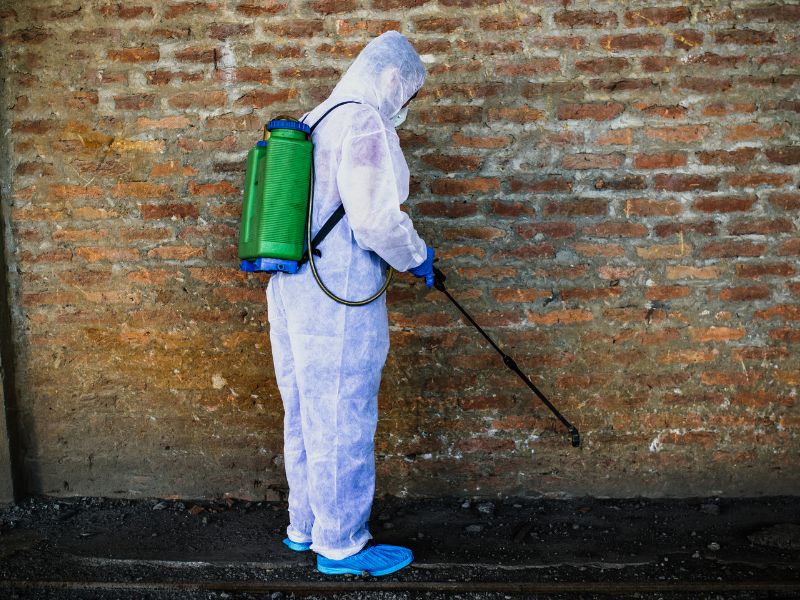
One day in 1979, NY police was called to what appeared to be a simple noise complain about a loud barking dog. When the officers arrived at the scene they could already notice that there were lots of cockroaches in the street. But when they entered the noisy house, they were reported to be ‘ankle deep’ in cockroaches. The roaches were everywhere.
In the end, a local exterminator came to treat the cockroaches. Fumigation treatment in the area was done to prevent further spread. Not surprisingly, the house of the roach infestation had to be demolished due to severe damage.
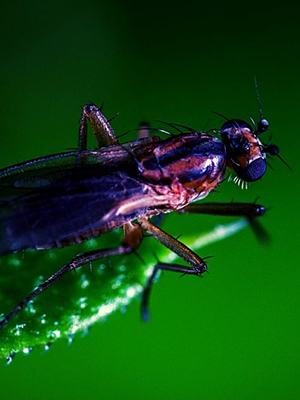
Pest control can lead to some amusing and unexpected situations, reminding us that even the tiniest creatures can become a source of funny pest control stories. Here one of the funny pest control stories from the internet that we found worth sharing:
Ants on the Run
One homeowner was trying to deal with an ant infestation for weeks, trying various DIY methods. When the professional pest control service arrived, they were able to trace the ants back to their source – an unattended candy stash in a child’s bedroom.
The ants had built an elaborate system to transport their loot. It was as if the ants and the kids had formed an unintentional partnership, resulting in a “sugar rush” that even the most resourceful pests couldn’t resist. The lesson here: Sometimes keeping your house clean and candies hidden can be the best pest control solution!
Pest Control in Singapore
Pro Tip: If you have pest infestation, the best way to get rid of them is to call a professional for help.
No pest or infestation is too strange for Killem to handle. Don’t be shy and feel free to contact us if something is bothering you and we will be sure to find a pest control solution that will work for you.
Related Posts
Industry Inside: Pest Control in the Food & Beverage Industry
General

People have a right to expect that the food and beverages they buy have not been contaminated by pests. Pests of all types need to have sustenance to survive, and when they chance upon a food and beverage outlet, they are not going to give up that land of plenty without a fight.
The Law in Singapore
The National Environment Agency (NEA) regulates the food retail standard industry in Singapore and requires all food retail establishments to be licensed in order to operate. A condition of obtaining this license is to have a ‘pest control contract covering the control of rodents, cockroaches and flies during the year-long licensing period. The inspection frequency of the food shop premises covered in the contract shall be at least once a month to detect any sign of pest infestation.’
Pro Tip: Regularly inspect your facility and monitor any signs of pest infestations.
Why Is Pest Control Important in Food and Beverage Outlets?
Food safety is essential. Pests can bring disease with them, and the last thing you need is to have food infested by pests.
It cannot be sold and if it is and makes people sick, it will cause serious problems for your business in terms of loss of reputation.
If the pests get to the point of infestation, it could mean that you have to close down the business while you are having the problem taken care of by pest control specialists.
What Is Good Housekeeping?
In any food and beverage establishment, there is always a chance for spills to occur. When those spills, large or small, are not cared for properly and cleaned up, it acts as an invitation to all manner of pests. They will find a way into the facility in a range of ways. They can get through vents, cracks, holes, and areas that you would never even notice.
By ensuring a very clean facility, it helps to reduce the risk of pests substantially.
This does not mean that they will never find their way into the facility. It can and does happen. When this occurs, you will want to contact professional pest control services to help you with your pest problem.
One of the ways that professionals can help is by looking for the various routes that the pests are using to get into the building. They can “close off” those areas to make a recurring infestation less likely.
DIY Pest Control Methods for Food and Beverage Establishment
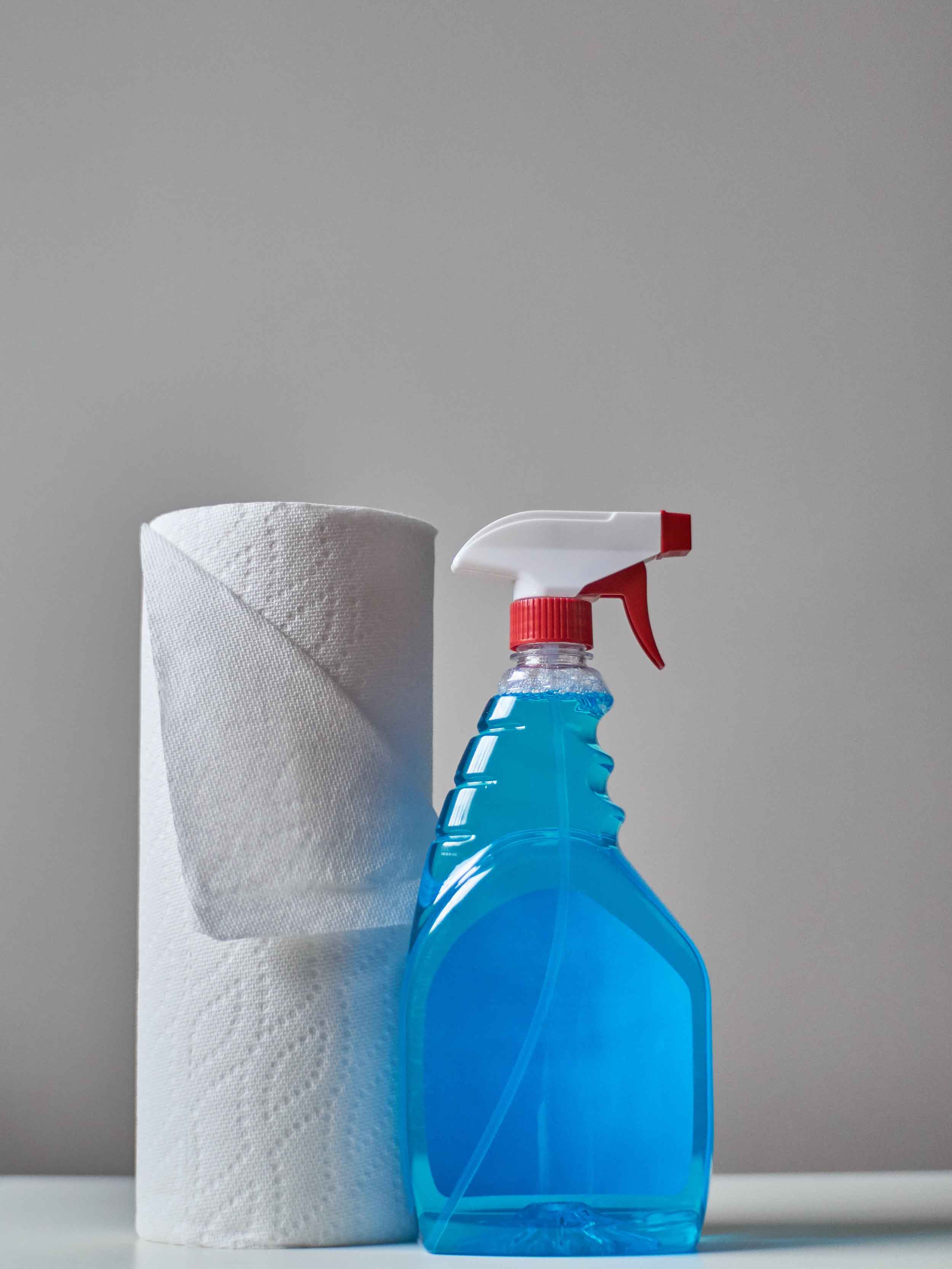
What Types of Pests Are Commonly Found in Food and Beverage Outlets?
Many types of pests like to get food in food and beverage outlets. Whether it is a warehouse, a manufacturing facility, a grocery store, or an eatery, pests such as flies, ants, roaches, and rodents can be present.
They smell the food and they want to have access to free meals.
Even birds have the potential to become a problem in these types of outlets, and they can cause some serious damage to the building, as well as the food. It is even possible for them to spread illness, like so many of the other pests out there.
You never want to take chances when it comes to keeping food and beverages safe. If you have a pest problem, get in touch with the professionals as soon as you can. Even if you do not have a noticeable problem, do not forget, that you still need to have regular pest control as required by NEA.
The 6 types of pests common in food facilities are:
- Mice and rats
- Cockroaches
- Birds
- Flies
- Ants
- Spiders
Problems Caused by Pests in Food and Beverage Facilities
You are running a successful business, but one day you need to close down because of a huge pest infestation. Often, businesses take action too late. When you notice the presence of a pest, contact a pest control company immediately.
The importance of pest control in food businesses cannot be underestimated. Food businesses need to remain alert to any sign of the presence of ants, mice, cockroaches, flies and other pests. These pests are all attracted to food, so make sure to throw out the trash frequently, clean all areas when there is time, seal and store any food you are not using. This can help prevent two of the main problems caused by pests:
- An extension of their uninvited stay
- An expansion of the pest
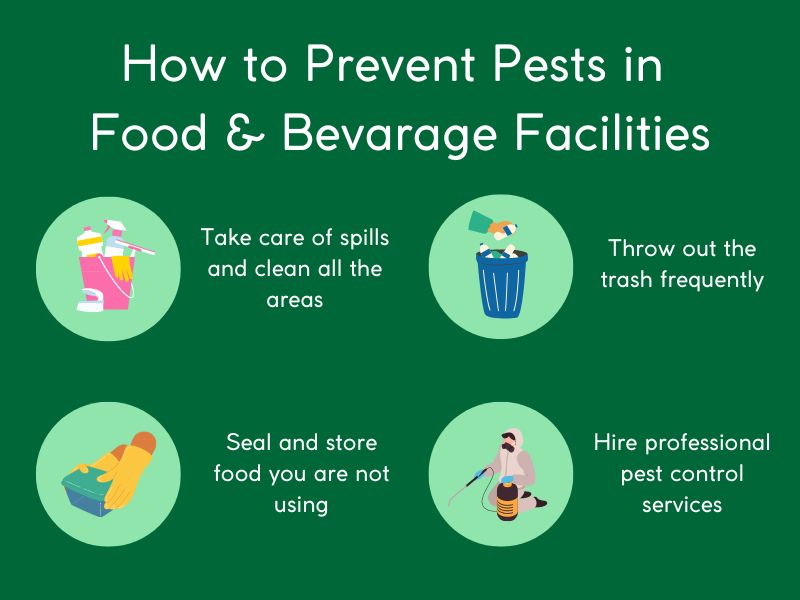
How Can Killem Pest Help Your Food Business?
We are trained and certified to help the F&B industry, including restaurants, bars and cafes. Killem Pest is a known company in various malls across Singapore, and we have helped many businesses remain open or re-open by handling their pest control problem. We also provide recommendations for keeping your premises free from pests.
Frequently Asked Questions
Poor pest control in the food and beverage industry can lead to product loss and business failure, poor customer satisfaction, and health risks related to diseases that pests can cause.
The food and beverages industry is exposed to various types of pests including cockroaches, flies, rodents, ants, beetles, bugs, and others.
To prevent pest infestations in food and beverages, maintain all your areas clean and regularly dispose of the garbage, store products in safe and enclosed containers, and perform routine inspections.
Related Posts
Technology and Pest Control: How Is Tech Transforming Pest Control?
General
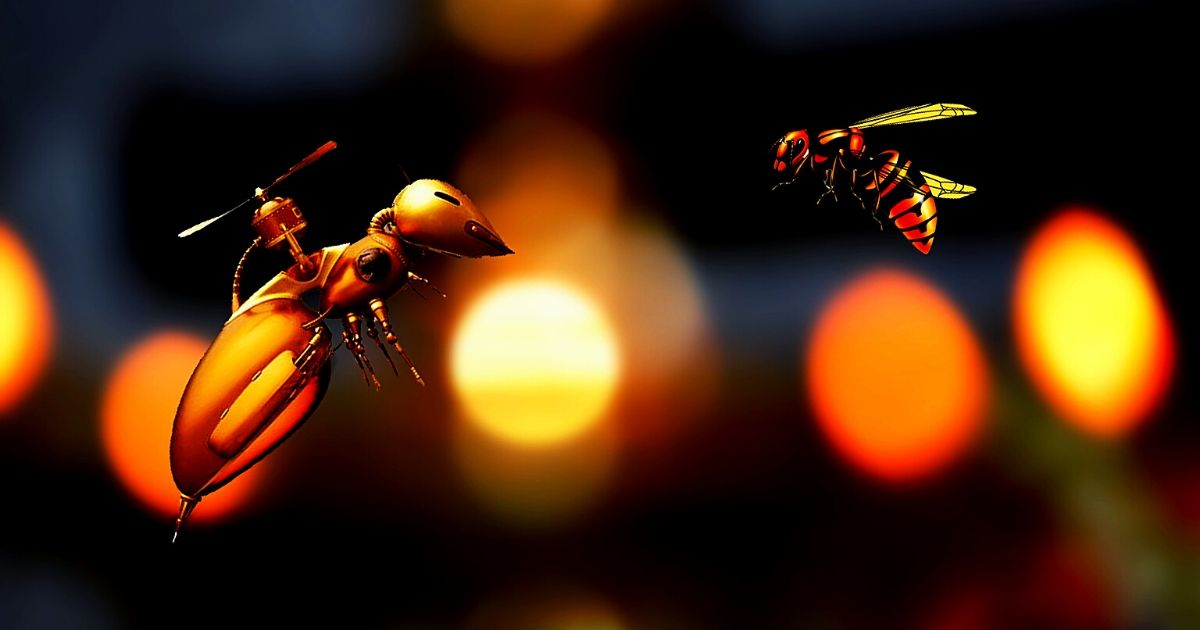
In the past, extermination and pest control was a relatively simple affair. Those in the business tended to use traps and various sprays to take care of pest problems. While those methods could be effective, technology over the past few years has helped to improve the quality of pest control markedly.
Today, there are some truly amazing tools being used by pest control specialists in Singapore.
They can make the job of providing you with a pest free environment safer, faster, easier, and cleaner than ever before.
Before we look at some of the different technological tools in use by Killem Pest today, it is prudent to note that the focus is now on integrated pest management (IPM). IPM is a broad-based approach that focuses on prevention (via regular monitoring) and appropriate control (via the appropriate chemicals and equipment).
Electronic Rodent Bait Stations
People have finally started building a better mouse trap. These traps work for all rodents (rats and mice). The older traps that had been in use were often ineffective, could cause painful deaths if the animal did not die right away, and they tended to be one-time use traps.
However, the electronic rodent bait stations are more effective. They have an external housing with an area for the rodent to enter when it gets a whiff of the bait placed inside. When they step across sensors in the trap, it will electrocute them. It is a quick and humane death.
These traps can be used repeatedly, as well, which leads to less waste. The bait stations are also programmed to an app to notify the pest control operator that a rodent has been caught and needs to be disposed of. Thus saves time as the pest control operator is straight away directed to the source, and does not have to inspect all other spots.
Drones
Drones are for more than just taking great aerial shots and racing. Many in the pest control business are now using drones that can fly up and check rooftops and high rafters in buildings. They can get a better idea of the types of pests that could be living in those locations, and they can then formulate a plan to eliminate them.
Sonic Wands
Mosquitoes are a bane, and they carry many different types of diseases, including dengue and the zika virus. The sonic wands that are available today can make controlling the populations much easier. Mosquitoes breed in standing water. This could be a swamp, puddles, and even storage containers for water. The sonic wands utilize sound to kill the larvae in the water. It is a safe technology, and you will not have to worry about chemical treatments that are typically used.

Thermal Imagery
This is another very impressive tool. Thermal imaging cameras can work well for a range of pests. It is possible to see heat signatures of the creatures, and even insect trails on the walls.
This will give the pest control specialist a better understanding of the pests they are dealing with, and even the location of the pests.
This can be very helpful in many different types of environments.
The technology used in pest control today is truly impressive, and it has made pest control easier and more effective. For more information on the technology we use, visit our pest control services page.
Other types of pest control technologies
There is a whole range of old and new pest control technologies that are used by pest control companies around the world. These include:
- Electronic Monitoring
- Trail Cameras
- AI-Driven Sensing Technology
- Traps, Deterrents, Repellents
- Predator Deterrent Lights
- Motion Activated Sprinkler
- Ultrasonic Pest Control
- Mosquito Ultrasonic Pest Control
- Solar Powered Ultrasonic Mole Repellents
- Thermal and Cold Foggers
- Nontoxic Heat Treatment
- Insect Growth Regulators (IGRs)
- CRISPR-based Gene Drive Technology
Frequently Asked Questions
Technology helped to improve the quality of pest control in recent decades, decreasing the impacts of pest control methods on the environment and on non-target creatures.
Some of the common technologies used for pest control include electronic monitoring, thermal imaging technology, AI-driven sensing technology, ultrasonic pest control, various modernized traps, deterrents, repellents, and others.
Related Posts
Killem Pest Interview with Leading Entomologist Dr How Yee Fatt
General
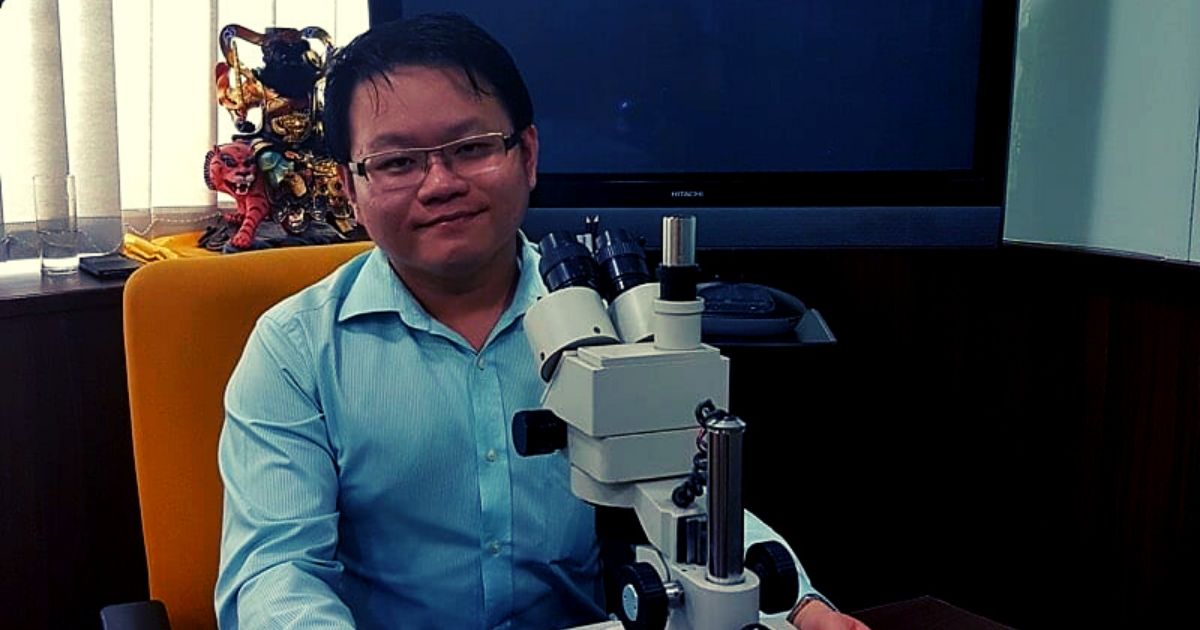
In the very first interview conducted for The Killem Blog, we are fortunate enough to speak Dr How Yee Fatt, a leading entomologist based in Singapore with Bentz Jaz Singapore Pte Ltd. Read on to find out about Dr How’s exciting career and his thoughts on the pest control industry.
KILLEM PEST: Thank you for taking the time to speak to us today. Many people have not heard of the term ‘entomology’ or ‘entomologist’. Could you please explain what these terms mean?
DR HOW: ‘Ento’ means insects, while ‘logy’ means the study. Therefore to put simply, entomology is the research or study of insects. The related scope consists of the taxonomy (identification and classification of insects), control of insects, insect biology, the importance of insects and others.
KILLEM PEST: What is your educational and professional background?
DR HOW: I completed my Bachelor of Science and PhD at the Universiti Sains Malaysia (USM) in Penang. I started a degree in Applied Biology but in my second year, we were required to select our major in several areas such as vectors and parasites, biotechnology, aquatic, agricultural or environmental biology.
I was contemplating pursuing either biotechnology or vectors and parasites (entomology). I was fortunate enough to meet Professor Lee Chow Yang, a leading entomologist in Asia who has since became my mentor. Professor Lee was very helpful and shared a lot about the study of vectors and parasites which made me realise the importance of this study. As a city boy, my only experience of insects was dealing with ants so the study of vectors and parasites offered something completely different for me. Within the vectors and parasites major, I specialised in urban and industrial entomology (rather than economic, agricultural or medical entomology)
During my degree I completed an industry attachment at the Institute for Medical Research (IMR) in Kuala Lumpur which was very interesting and really opened my eyes and confirmed that an entomologist really is like a doctor to insects. I was involved in facilitating the artificial mating of Anopheles mosquitos and surgically cutting open flies to remove their digestive tract to analyse the level of protein.
Upon completing my Bachelor degree, I straight went straight into my PhD. USM is a leading university in Asia for the field of entomology and having Professor Lee’s continued mentorship support was important. As I could not decide what to specialise, Professor Lee suggested that the field of bed bugs was in its infancy (at that point in time) and there was an opportunity to be a pioneer in research and study for this insect. So, because of my interest and in wanting to be a pioneer, I decided to study bed bugs.
KILLEM PEST: Does Singapore offer any degrees or courses in entomology?
DR HOW: Entomology is offered as a course / elective in some Singapore universities, but not as a major. I understand that the courses here are focused mostly on molecular entomology (which is checking the classification of insects) and not so much the other fields (particularly Urban and Industrial Entomology).
KILLEM PEST: How long have you been working as an entomologist? How long have you been with Bentz Jaz?
DR HOW: Consider including the work that I carried out during my PhD after my degree graduation, I have been working as an entomologist for around 11 years. I started at Bentz Jaz right after completing my PhD, this was 6 years ago! When I was completing my PhD, there were two options: either continue an academic career or enter the industry. I chose the latter as I wanted to be involved in the practical and commercial side of insect control, rather than continue an academic career of research, publication and teaching.
KILLEM PEST: What has been the most interesting or memorable experience of your career?
DR HOW: For my PhD, I needed to get my own specimens of bed bugs to conduct my research. This proved challenging because I needed an appropriate specimen size, and also I wanted to study bed bugs in a real, practical context and based on the most natural way they feed, which is on real human blood, without any chemicals.
Since I wanted my results to be accurate, in the name of science, I ‘donated’ my blood to the bed bugs by letting them feed on me.
I have to say, I have never donated as much blood as I have during these years of research!
When bed bugs feed on you over time the way they did on me, you can feel your body change. The bit areas become swollen and the bites are extremely itchy, so you are also exercising very strong willpower and control in order to manage the symptoms. When I started, the bed bugs would feed on me for 2-3 hours per day. After 1 to 2 years, the bed bugs would feed on me for the whole night (12 hours) at least twice a week because I required larger sample size for my extensive research. I will never forget this experience during my PhD!
KILLEM PEST: Pests are a nuisance and they can carry disease or cause economic damage, yet they also play an important part in our ecosystem. Is it possible to completely get rid of them?
DR HOW: I will quote what my mentor, Professor Lee, said during the first entomology course: ‘pests are defined by humans’. Not all 6-legged insects are pests, it really depends on the human lifestyle, for example, ants are a pest in Singapore, however in other countries they are a part of everyday life. It is important to know what the client’s objectives are in wanting to eliminate pests, and then managing those expectations.
Technology and Pest Control: How Is Tech Transforming Pest Control?
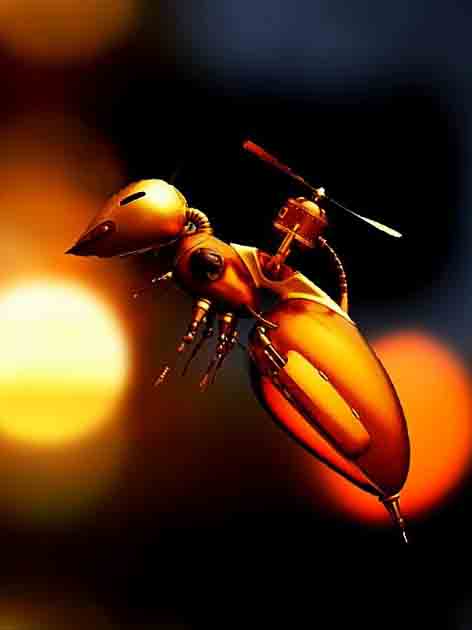
KILLEM PEST: Over the last few years, pest control has undergone significant changes, especially with the increased use of technology like electronic rodent monitoring bait stations and drones. What else do you think we can expect to see in the near future in terms of technology?
DR HOW: Many multinational life science and chemical companies such as Bayer and Sumitomo are inventing new active ingredients that are not yet introduced in the market. These new active ingredients are designed to work towards greener and more environmentally friendly pesticide usage.
There has also been a shift from oil-based fogging to water-based fogging to control mosquitoes and other flying insects.
The benefits of this is that the latter allows for odourless treatment that does not stain the area that is treated. Water-based insecticides are also lighter and so disperse quicker. On the point of mosquitoes, devices such as the ultrasonic can control mosquito larvae though non-chemical means.
Other equipment, such as the termatrac, have also evolved dramatically. The termatrac has revolutionised termite inspection practices by providing a 3-in-1 termite detection unit which includes the thermal sensor, moisture sensor and termite detection radar in one device.
Pest management software is also becoming more popular, especially in the US. These cloud-based systems eliminate the need for physical service reports because technicians can refer to the history of the client’s premises via cloud. This allows them to refer to previous images, comments and use of chemicals easy and quickly, and reduces the amount of paper we use.
KILLEM PEST: Pest control plays a key role in public health. How do you think professional pest control providers like Killem Pest, and suppliers like Bentz Jaz can work together to ensure that pest control remains a key focus in public health?
DR HOW: We need to keep upgrading industry practices, standard operating procedures, improve the education of the public and improve on the safety, quality and delivery of services.
A critical point to highlight to clients is that the focus should be on long term pest management rather than on ad hoc services. A one day, one time treatment will not solve any pest problems, it is a remedy but not a cure. Integrated pest management is about customising the perfect solution for the client, which takes into account any concerns they might have, for example having pets or small children at home.
Bentz Jaz will continue sourcing for new active ingredients or application methods and working with providers of services such as Killem Pest in the application and implementation of the said methods.
In order to achieve this, transparency between parties such as Bentz Jaz, Killem Pest and the client are very important.
KILLEM PEST: Bentz Jaz has been involved in corporate social responsibility initiatives as well as trying to bring awareness about the industry, products and treatment methods to the public. What are some of the past events held and future events that we can look forward to?
DR HOW: This year we replaced our annual Dinner & Dance with a ‘Plant-A-Tree-Programme’ at Kranji Marsh. In total, Bentz Jaz and our partners donated and planted a total of 50 trees. We have also held educational programs for the public with workshops on explaining pests and how to deal with them. We want to continue organising events so that the public can understand the industry better.
KILLEM PEST: Thank you very much for your time. Do you have any closing remarks that you would like to share with the public?
DR HOW: Insect and pest management is not as simple as people may think and we really have to make an effort to understand insects. After all, you can only conquer your enemy when you know it well! How many different of species are there in the world? More than a million, so there is a lot that we do not know yet.

